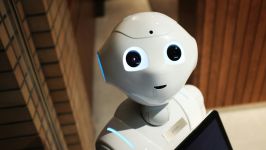With all the potential emergencies that can happen, it's important for agencies and organizations to have a system that can relay an alert message to all devices simultaneously. The good thing is, one is already being developed and might be tested as early as October 4th.

FEMA, FCC Emergency Alert
Alerts that show up on both TVs and smartphones can be a very effective way to reach out to the majority of a country's population, and that is the project that the Federal Emergency Management Agency and the Federal Communications Commission are working on.
On October 4th at 2:20 p.m. ET, the National Wireless Emergency Alert System will send out a notification on phones, TVs, and radios as well, which will determine how the public will react to the alert and how ready they are if there really is a crisis, as per Engadget.
Mostly, the agencies aim to test if the Wireless Emergency Alerts can effectively reach all cellular devices nationwide. The notification will state: "THIS IS A TEST of the National Wireless Emergency Alert System. No action is needed."
The cellphone test will be disseminated as a Common Alerting Protocol message through the Integrated Public Alert and Warning System-Open Platform Emergency Networks. The included parties can expect a "unique tone and vibration" which emphasizes the urgency of the alert.
With the Emergency Alert System, the notification may arrive at the same time as television and radio. For phones, users will be able to make the alert noises stop anytime they want. Otherwise, it would continue playing for 30 minutes.
The alert system is already set to be tested on the given date, but in the event that there is an actual emergency on October 4th, the date of the test will be moved to the backup date, which is October 11th, according to reports.
Why It's Important
Potential risks and disasters, especially those at the national level, are usually the kind of alerts that must be announced and made known as soon as possible. Given that this method is the fastest way to inform the public about potential dangers, the test is necessary.
With the early warning, people will be given the time to prepare response plans, allocate resources, and take the necessary measures to remain safe during the impending hazard coming their way, as mentioned by the Prepare Center.
The emergency broadcast could provide people with instructions on how to weather the risks, which are sometimes not known to certain parties, as well as offer updates about ongoing disasters that can prove to be significant.
The Common Alerting Protocol usually provides answers to how bad it is, what it is, where it is, how soon it is, and what people should do. In addition to that, it can be translated into different languages so people would be able to understand them if they do not know English.
For instance, those who have their phones set to Spanish would see the alert message as: "ESTA ES UNA PRUEBA del Sistema Nacional de Alerta de Emergencia. No se necesita acción."









